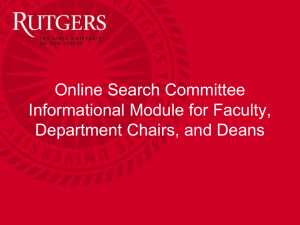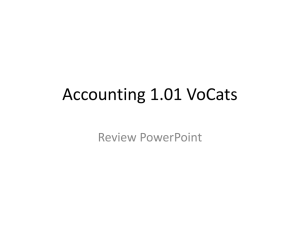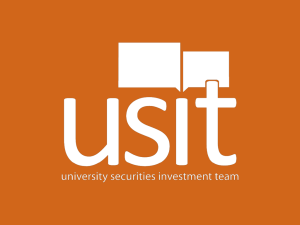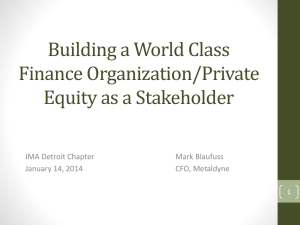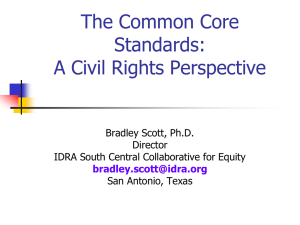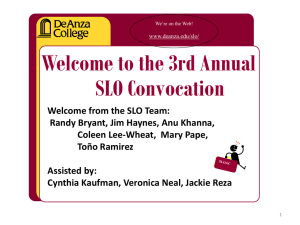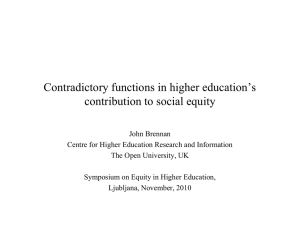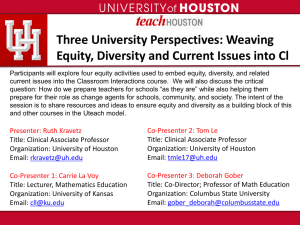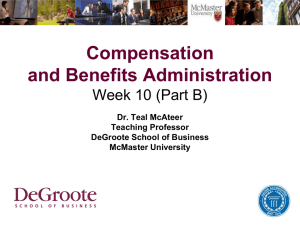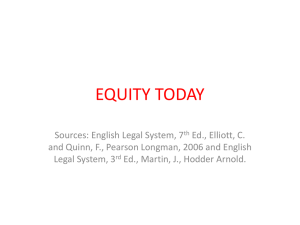Regional Equity Network Presentation
advertisement
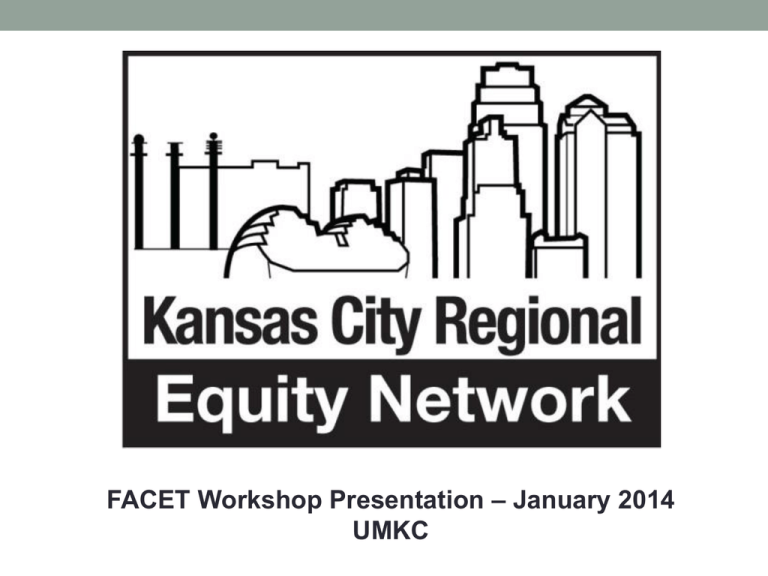
FACET Workshop Presentation – January 2014 UMKC Who We Are We are a metropolitan collaborative working together for systemic change by advocating for a more equitable region through education, organizing, and public policy change. Mission Our mission is to create an equitable region where all people can realize their full potential in all aspects of life. Vision of an Equitable Region When all residents regardless of their race/ethnicity/nativity, neighborhood of residence, economic class or other characteristics, are fully able to participate in the region’s economic vitality, contribute to the region’s readiness for the future, and connect to the region’s assets and resources. Membership Our membership includes change agents working together - community developers, elected officials, neighborhood leaders, labor, ex-offenders, students, faith-based organizing groups, civil rights leaders, environmental justice advocates, transit riders, public health representatives, funders, researchers, and policy advocacy groups… Accomplishments 1. Created an Equity Lens • MARC Creating Sustainable Places regional plan 2. Planning for equity in six transit corridors • Smart Moves regional transit plan, MARC CSP plan • Key focus for transit investments, including the federal grants 3. Developed Equity Criteria 4. Partnership with Policy Link • National research and action institute focused on equity 5. Equity Profile of our Region • One of four cities selected nationally for regional equity analysis 6. Increased capacity building • Partnerships with local Universities including faculty & students Equity Lens Education – the region must assure that all of its members have full access to the highest quality of education opportunities Engagement- “plan with us not for us” Local people must be included in the planning and distribution of resources to address the challenges they face in their communities. Environmental Justice – the region must insure sure that no single geography or population bears a disproportionate environmental burden and that all places and people have equal access to a healthy environment Equity Lens Economic Development “development without displacement” - foster a development strategy that provides all residents with training opportunities, a broad array of job opportunities for a variety of skill levels and career paths, and entrepreneurial resources and opportunities Housing Choices – build into development and redevelopment a range of housing types and price points Equity Lens Transportation – develop a transportation system that provides a range of choices and that enhances access to jobs, services, and other opportunities for all people Health – develop communities that encourage healthy lifestyles and provides easy access to healthy foods, recreating, and health care services Reinvestment – put in place policies that encourage reinvestment in existing neighborhoods Communities of color are driving Kansas City’s population growth and their ability to thrive is central to the region’s economic success now and into the future. • Why equity matters now… The face of America is changing. Our country’s population is rapidly diversifying. By 2043, the United States will be a majority people-ofcolor nation. • Why equity matters now… Yet racial and income inequality is high and persistent. Over the past several decades, longstanding inequities in income, wealth, health, and opportunity have reached unprecedented levels, and communities of color have felt the greatest pains as the economy has shifted and stagnated. • Why equity matters now… Strong communities of color are necessary for the nation’s economic growth and prosperity. Equity is an economic imperative as well as a moral one. Research shows that equity and diversity are win-win propositions for nations, regions, communities, and firms. • Why equity matters now… The way forward: an equity-driven growth model. To secure America’s prosperity, the U.S. must implement a new economic model based on equity, fairness, and opportunity. • Why equity matters now Metropolitan regions are where this new growth model will be created. • Why equity matters now Metropolitan regions are where this new growth model will be created. Regions are the key competitive unit in the global economy, and the level where strategies are being incubated that bring about robust job growth that is linked to low-income communities and communities of color. Defining the Greater Kansas City Region… Demographics Steady Growth and Increasing Change Over the Past Several Decades The Kansas City region experienced moderate and steady population growth since 1980, growing from 1.4 million to 1.9 million people. In the same time period, it has gone from being 16 percent people of color to 27 percent people of color. The Population is Diversifying at an Increasing Pace Racial/Ethnic Composition, 1980-2010 100% 90% 2% 3% 13% 13% 2% 2% 5% 2% 3% 9% 13% 80% 13% 70% Other 60% Native American 50% Asian/Pacific Islander Latino 40% 84% 83% 78% 73% 30% Black 20% White 10% 0% 1980 Source: U.S. Census Bureau 1990 2000 2010 Demographics Steady Growth and Increasing Change Over the Past Several Decades …For the past two decades, most of the growth has come from people of color—61 percent of the growth in the 1990s and 67 percent of the growth in the last decade. People of Color Contribute the Majority of the Region’s Growth Since 1990 Total Population Growth and Composition, 1980-2010 Non-Hispanic White 188,950 194,966 People of Color 33% 39% 131,640 71% 67% 61% 29% 1980-1990 Source: U.S. Census Bureau 1990-2000 2000-2010 Demographics The share of people of color is projected to increase through 2040 Racial/ Ethnic Composition, 1980 to 2040 U.S. % Whit e Ot her Nat ive American Asian/ Pacific Islander Lat ino Black Whit e U.S. % Whit e Ot her Nat ive American Asian/ Pacific Islander Lat ino Black Whit e 2% 13% 3% 13% 84% 83% 2% 2% 5% 13% 2% 3% 9% 3% 3% 12% 3% 4% 16% 4% 5% 21% 13% 13% 78% 12% 73% 11% 69% 64% 58% 1980 18% 1% 2% 5% 14% 29% 3% 2% 14% 21% 1990 2000 18% 2010 17% Sources: U.S. Census Bureau; Woods & Poole Economics. 65% 58% 1% 3% 6% 21% 35% 1%2% 5%7% 1% 2% 6% 8% 2% 2% 7% 9% 29% 41% 35%47% 41%52% 2020 2030 17% 65% 17% Projected 17% 58% 2040 Demographics The racial generation gap between youth and seniors has more than doubled since 1980 Percent People of Color (POC) by Age Group, 1980 to 2010 Percent of seniors who are POC Percent of youth who are POC 36% 21 percent age point gap 21% 9 percent age point gap 15% 70% 12% 33 percentage point gap 1980 1990 2000 2010 42% Source: U.S. Census Bureau. 17 percentage Note: Gap value may not equal the difference in percentages shown due to point gap rounding. 25% 37% An Equity Profile of the KansasCity Region PolicyLink and PERE Readiness An education and skills gap for people of color Educational Attainment by Race/ Ethnicity/ Nativity, 2006-2010 Bachelor's degree or higher Associat e's degree Some college High school grad Less t han high school diploma 22% 18% 40% 9% 48% 56% 2% 9% 8% 26% 7% 27% 24% 7% 53% 24% 32% 34% 7% 25% 24% 16% 40% 22% 14% 5% Black 17% 8% 15% 13% White 5% 11% 6% 2% 10% 3% 60% 12% Latino, U.S.-born Latino, Immigrant Asian, U.S.-born Asian, Immigrant 7% Source: IPUMS. Universe includes all persons ages 25 through 64. 23% 23% 53% Inequality threatens the region’s future prosperity Income inequality is on the rise in the region …most workers have seen their wages decline or stagnate over the past several decades after you account for inflation. The bottom half of the region’s full-time workers, for example, have seen their wages fall 6 percent since 1979, while the wages of the top 10 percent of workers rose 13 percent. Inequality threatens the region’s future prosperity As inequality has increased, the region’s middle class has shrunk and poverty and working poverty (defined as working full-time for an income below 150 percent of the poverty level) have grown. More than one out of every four African Americans and Latinos in our region live below the poverty level. Implications of Equity Profile of KC region To secure a prosperous future, the region’s leaders must take steps to build a more equitable and sustainable economy… • growing good jobs • connecting youth and vulnerable workers to education and training • increasing access to economic opportunities located throughout the region. These are critical strategies to put all who live in the region on the path toward reaching their full potential. Where do we go from here? 1. Build Relationships 2. Share Facts 3. Develop Policy Together NEXT STEPS KC Regional Equity Network - Quarterly Meeting February 14th from 9-11 am Where: Mary Kelly Center, 2803 E. 51st Street Kansas City, MO


